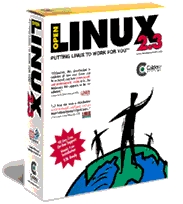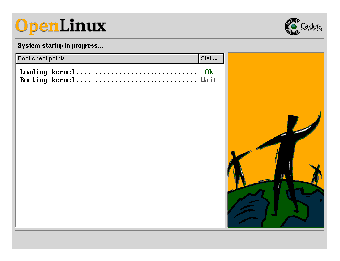Linux Turns 20: A Personal Reflection
And So It Begins…
In the 90s, I was pretty much a Windows/DOS user. Because I was a teenager, the computer was used mainly for gaming and programming, with some web surfing and schoolwork thrown in for good measure.
One day I was shopping in Borders, when I came across this box prominently displayed:

Caldera OpenLinux
It was very much an impulse purchase — I was interested in everything related to computers back then, and I believe the price was relatively low (especially compared to other operating systems and software).
I hadn’t heard of Linux before then. I doubt I was even aware that the CDs in the box were a complete operating system and software distribution — to me, it was just another thing to install and explore.

In retrospect, this may have been one of the better first attempts at the “Linux desktop”. Caldera did a good job of trying to make installation easy — it had a graphical installer, something that Windows didn’t have. It also came with a nice manual. Unfortunately, I didn’t get very far. There may have been a hardware issue, or maybe I had trouble partitioning the hard drive. At any rate, I quickly gave up, packed up the box, and forgot about it.
Thrown Into The Deep End
As is typical in the real world, I was thrown into a couple situations that forced hands-on work with the mostly-unknown technology.
One of our computer labs at college had Linux+KDE machines. It was used for multiple courses and was available for general use. I used it most heavily in the Parallel Processing course, where all the machines were networked into an MPICH cluster. But I didn’t take the time to learn any more than the basic commands that were required for the current project. A few things do stick out in my memory: the idea of user folders (something that didn’t exist in Windows 98 and Mac OS 8), the tar command, and Ctrl-C for something other than copying text.

Macalester computer lab (Photo copyright Macalester College)
In my junior year, I got an internship at Honeywell Labs. This was my first work experience at a tech company. I was surprised to find out that all the engineers used Unix for their work. So my first week was a crash course in the Unix command line — not strictly Linux, but close enough that it was my first formal training in the *nix environment. I wish I could remember how I actually learned the system. I think my supervisor showed me a few commands and told me to man everything else. I probably gleaned info from other references, manuals, and websites that I could find.

Most of Honeywell's computers were Windows with Unix terminal access, but I remember a few Solaris machines.
A Linux Enthusiast Is Born
At this point, I had the essential knowledge of the Linux system, but I didn’t know how to apply it well. Those skills began in 2003, when I took a job at ArrowQuick Solutions.
Most of my growth and experience with *nix in the last 8 years can be attributed to multiple factors:
- I originally used a Mac as my workstation, which runs OS X (a derivative of Unix). Some command line fu was bound to rub off.
- Our web servers have always run Linux. In the beginning I only had to know basic stuff. As we’ve grown, ArrowQuick has taken more control of the hosting responsibilities. Now, I’m basically a Linux system administrator.
- Along the way, I experimented with various distributions. We played around with Yellow Dog on the Macs at work, and I burned copies of the Knoppix live CD.
- The Ubuntu distribution came out in 2004 and quickly rose to prominence as one of the most user-friendly Linux desktops. When it reached maturity, and OS X / Macs became less attractive, I switched to it for my work computer.
Back To The Present
Today I have Ubuntu (classic Gnome desktop) on my work laptop, with a Windows 7 PC at home.

Ten years ago, I had no idea what “open source” meant. Of course, as you work in Linux, you naturally learn about FOSS and the communities around it. As a web and software developer, free and open source software has helped me immeasurably.
With broadband and live CDs, you can download a promising distribution and run it on your current computer without messing up your existing files. Linux has its downsides, but for most office workers and casual users, it easily stands toe-to-toe with Windows and OS X. Try it out, and have fun!
More Stories
- The Story of Linux — a short YouTube video about the history of Linux
- The Linux Chronicles — a tech journalist describes the progress Linux has made
- Stories of Linux — More-interesting and better-written personal stories
Solaris picture provided by westopia chety filez.
|
Rob Hammann |
Amazing it has be 20 years. My first real experience was in 1999 when I was teaching at William Penn University and had to set up an apache web server. I used Caldera for that. Fortunately it was fairly simple to set up since it was simply a web server. Now I have a linux machine at home and I run Ubuntu on parallels on my Mac and use it probably three to four times per week.